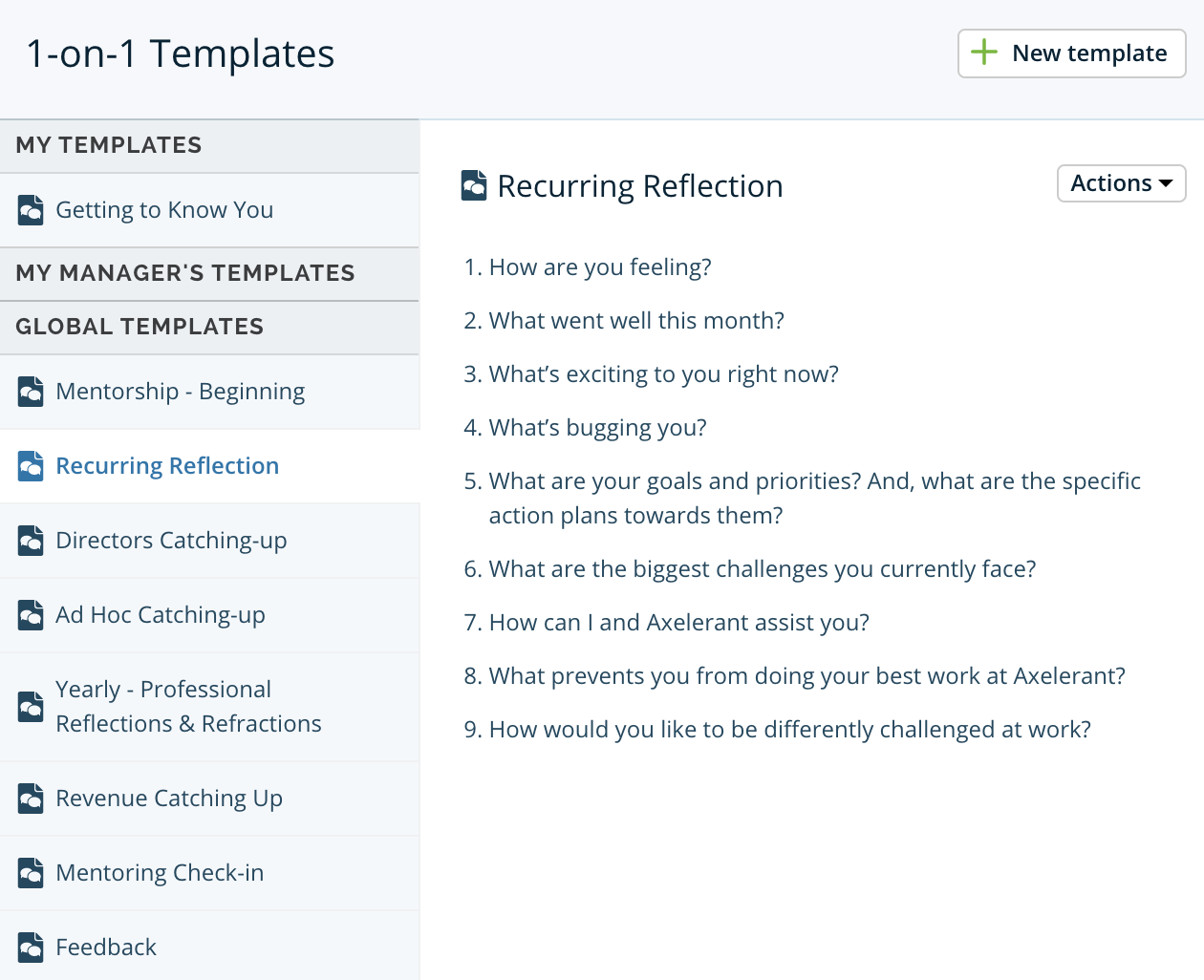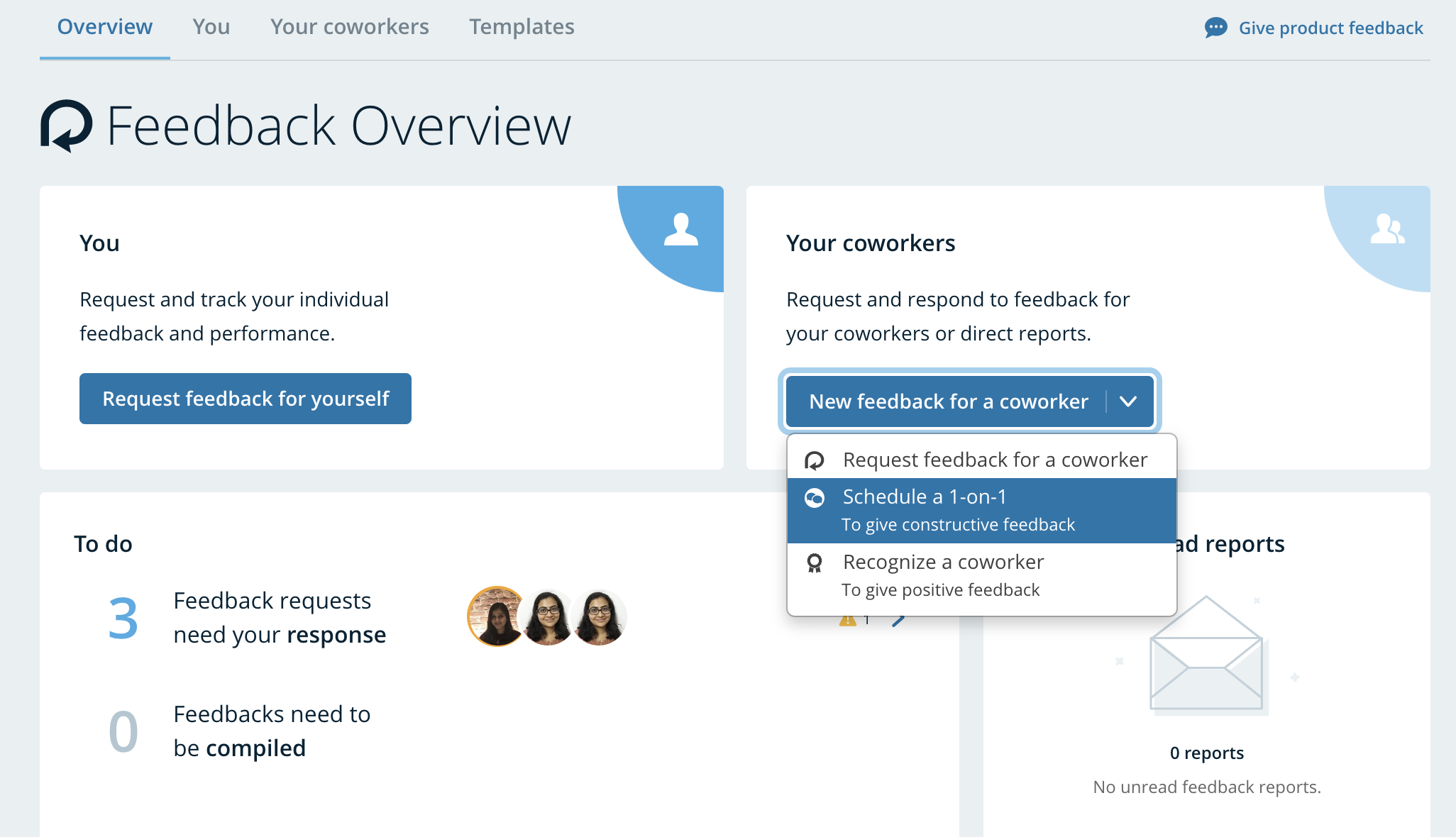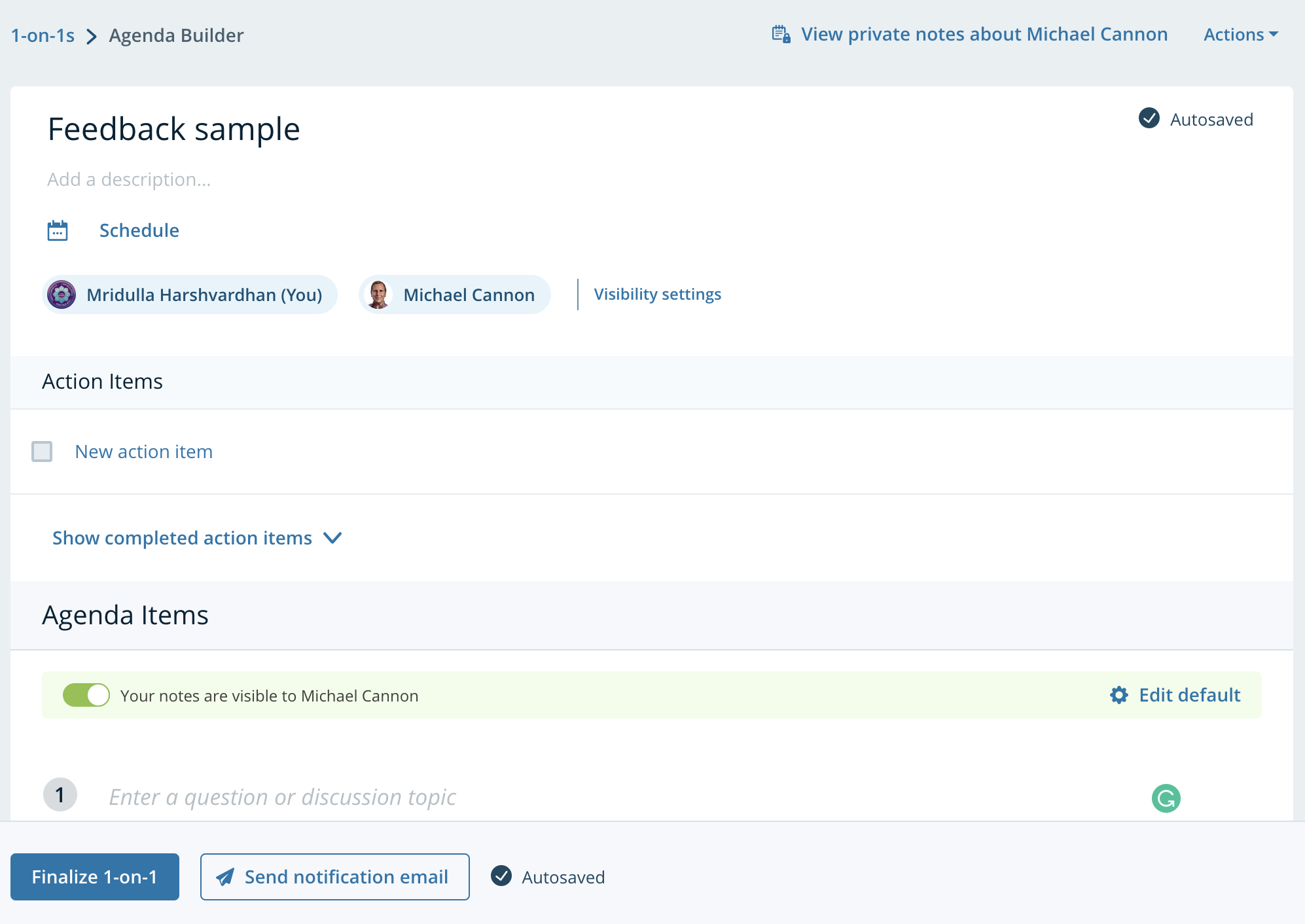Specific feedback is an act of kindness. – Michael Cannon
One-on-One Basics
A great, constructive one-on-one (1-1) session is where we demonstrate that we genuinely care about the other person, which means taking the time to know what’s important to them and what drives them. As such, during the conversation, do more listening than talking. And, when talking, ask good questions to elicit underlying information to help you better understand the situation and how to move forward.
Learn about Harvard Business Review’s Good Feedback Conversation suggestions.
Benefits of One-on-Ones
You | For Leaders |
|---|---|
|
|
One-on-One Starters
What concerns related to work, time management, team members, etc., do you have?
How are you asking for feedback via 7Geese from your team members once every month?
When was the last time you filled in the OfficeVibe poll? When more than 2-weeks, please complete the latest.
What’s the progress of your OKRs? Where are you stuck? How can I support you with your OKR?
How are you doing on your KPIs? Do you need any support?
What community contributions are you planning to make?
Other Open-Ended Questions (1).pdf by Paul Barnes
Giving Constructive Feedback
Constructive feedback aims to understand a scenario and work towards mutual resolution than place blame or criticize people. Therefore, when a situation requires a harder conversation than usual, prepare for it through the following steps.
The core structure of effective constructive feedback is naming a specific situation or behavior, explaining the impact or aftermath of that certain situation, and then looking ahead and discussing actions to avoid or reinforce the behaviors or situations. That’s why it is crucial to give precise, easily understandable, and implementable feedback to anyone who receives it.
Coachability Concerns?
Refer to "Just Cause" Procedure of Exceptional Situations.
Writing Things Down
State Facts
Facts are rarely controversial and often a great way to start conversations.
Describe a concrete situation.
E.g., "In the meeting last Thursday, you emphasized a couple of times that the existing codebase was a mess and that it is a pain to work with."
Own Your Feelings and Thoughts
Express your feelings and your story.
Describe felt consequences.
Critique only behavior(s) and not people.
E.g., "I noticed a distressed look on Jeff's face, who wrote most of that code. So I don't think I am the only one who sees it that way. From what I can see, you are not reaching people."
Propose Options
State what you value or the kind of impact you'd like to see.
Collect suggestions, but it's their scenario to resolve.
E.g., "What do you suggest to avoid this in the future?" Hear the suggestion, "Can you be more specific?"
Request
Collaborate or explain concrete actions that they should take.
Agree on how to move on, timeliness, and follow-ups.
E.g., "Thanks for listening and for considering my points. Let's talk again in two weeks to discuss how things are going and if you notice any changes in your interactions with colleagues."
Prevent Poor One-on-One
1-1s are not status updates. They’re opportunities for people to connect as humans over relevant topics to their working relationships, especially performance and career considerations. Next, each person should document and follow up on action items. And, when things don’t seem to move forward, reconnect about priorities and importance to clarify expectations.
Further, don’t expect amazing conversations to happen. It typically takes four to six quality conversations to build up trust and rapport with each other. Lastly, benefit from the doubt and trust each other’s intentions to help the organization and others be better together.
Be aware of the unintended consequences of casual feedback.
Successful One-on-One
Always share an agenda before the 1-1 meeting time
1-1s are not status updates; they’re about conversations, feedback, and recognition that matters
Trust begins with active listening and calm presence
Create a safe space to speak openly, and bring polite candor
Clear the network load, so the video works, and we can see each other
Wrap up the 1-1 by writing down notes while conversations are still fresh in mind
Document specific, measurable, attainable, realistic, and time-bound expectations for agreed actions
Using 7Geese for One-on-One
Using Feedback for 360s (Feedback for Others)
After asking for feedback from others, you’ll need to compile and share the feedback report manually.
7Geese One-on-One Templates
Feedback - CEDAR
Feedback - Situation, Behavior, & Impact
Your customized questions
Create a One-on-One Session via 7Geese
In the Feedback section, choose the highlighted section Schedule a One-on-One
Rename the new document as appropriate, like Feedback <<name>> and put your Zoom link in the template's header so that the calendar entry has the Zoom link included for easy access.




